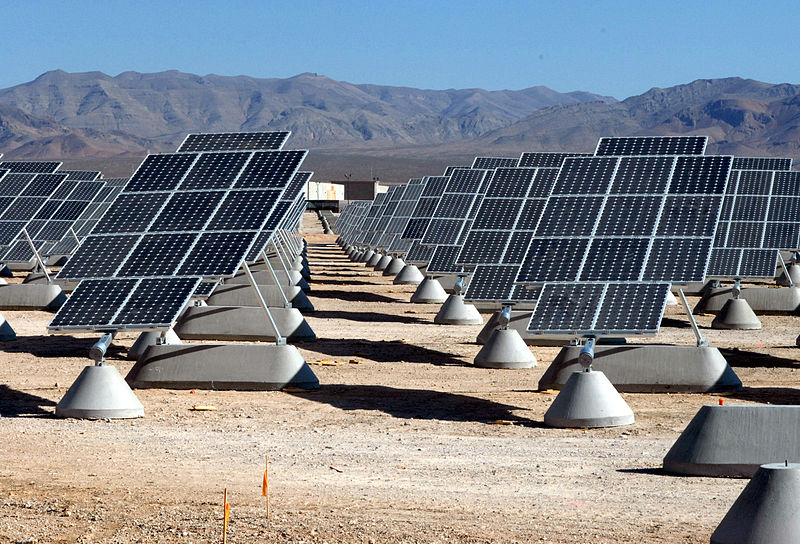122 Comments
Greg Jericho

The arrival of the Queen to Australia usually is accompanied by masses of articles and opinion pieces on the idea of Australia becoming a republic and the 1999 Republic referendum.
This week there has been bugger-all care about such matters - after all why would you want to discuss such things when the important issue is whether or not our Prime Minister genuflected herself in some feudal-age ritual before a woman placed in her position of supposed superiority purely because her uncle decided he wanted to marry a divorced American rather than stay King, by the Grace of God, of Great Britain, Ireland and the British Dominions beyond the Seas King, Defender of the Faith, Emperor of India of the United Kingdom.
Curtsies? Give me strength.
But the defeat in the 1999 republic referendum is a perfect example of how the progressive side of politics can fail spectacularly when it puts its mind to it, and I believe has much in common with the carbon price debate.
Last week, when discussing the Occupy movement with a friend on Twitter, he noted "… the left has a way of killing its young". He is right, and a good example perhaps is my piece
last week. The left also has a way of distrusting its older types, which invariably ends up with the left (or progressive side if you will) spending more time destroying each other than its actual opponents.
We saw this in spades back in 1999.
Back then the Australian Republican Movement supported a minimalist model, whereas the young Turks (in spirit if not age) like Phil Cleary favoured an elected president. Those in favour of a republic failed to achieve any real consensus and thus the question put forward by John Howard for the referendum was one that would thus fail to get the full support of the republican side, meaning a 50 per cent plus result was impossible.
All the anti-republic crowd had to do was highlight the goodness of the status quo and the lack of consensus of the other side. They won over those who did not believe in the republic and those who weren't sure about the republic model put forward.
The carbon pollution reduction scheme (CPRS) proffered by Kevin Rudd went through the same awful process – for reasons to do with the progressive side's ability to self destruct and because of the rise of Tony Abbot – a man who fought long and hard on the anti-republican side throughout the 1990s.
For example we had Rudd refusing to undertake any real discussion with the Greens. Thus we were left with a situation where we had the Greens not wanting to agree with Rudd and Turnbull. Tony Abbott saw what was going on, and as soon as he took over leadership, he played the republic referendum gambit to its full. He knew the Greens weren't going to vote with the ALP, he also knew he had status quo on his side.
You see the republicans (and I am one of them) love to talk about the idiocy of the monarchical system – where someone is given the right to rule purely on the basis of his or her birth. Back in 1999 Geoffrey Robertson loved to talk about how the monarchy was sexist because the first son gets priority over the first daughter.
Oh yes we were right (we are still right). The monarchy makes no sense. Were you creating a system of government now you would never select one family to have rights over all others. The Australian Republican Movement also had many celebrities who loved a republic. It would be wonderful, it would be perfect, and it would give us standing in the eyes of the world. And oh did we laugh at those who were worried about becoming a republic because we would be ineligible for the Commonwealth Games or because of the cost about renaming the RAAF to the AAF.
The anti-republicans didn't argue about systems of government – they merely pointed to our 100 years of stable democracy and also the occasional mention of how lovely the Queen was and you wouldn't want to upset such a person would you? They had very little desire to actually debate the monarchy – even going so far as to suggest the governor-general is essentially our head of state, and thus wondering what all the fuss was about.
Abbott, when he approached the CPRS, followed the script perfectly. Debate alternate climate change policy? Bugger that. Why when you can point to the status quo, our strong economy and that companies like LinFox are already doing good things so what is all the fuss about?
The switch from the CPRS to the carbon tax has seen the progressive side get together, but they have failed to see Abbott still playing the anti-republic card.
Abbott at no stage is really arguing the nitty-gritty merits of his own policy. Why would he? His entire strategy is to win over those who do not believe in climate change and also those who are not sure about the climate change model put forward.
Both the ALP and the Liberal Party are actually in agreement on the reduction target for greenhouse gasses by 2020. Both support a 5 per cent reduction of 2000 levels. Does anyone actually remember the debate over this? This figure is the crucial measure on which the entire carbon tax/direct action debate hangs and yet few voters would have even been aware of the "debate" which resulted in the ALP and Liberal Party being in agreement.
Tony Abbott knows this, and so he ignores it in his attacks on the carbon tax.
Thus we had him in his first interview on
Lateline upon becoming leader of the Liberal Party:
TONY ABBOTT: … If you look at Roman times, grapes grew up against Hadrian's Wall - medieval times they grew crops in Greenland. In the 1700s they had ice fairs on the Thames. So the world has been significantly hotter, significantly colder than it is now. We've coped.
And yep, the progressives, lo did we laugh, as we did in 1999. But Abbott did not care because science and economics are not his concerns.
Thus we also have him arguing with glee that the carbon tax will have no impact on
world temperatures:
We heard from the Government's principal climate change salesman, Professor Flannery, just last Friday that it will not make a difference for a thousand years. It is the ultimate millennium bug. It will not make a difference for a thousand years.
Abbot does not care that arguing that a carbon tax reducing Australia's emissions by 5 per cent will have no impact on temperatures also means that reducing emissions by 5 per cent by direct action will also have no impact on temperatures. Caring about that would have been like an anti-republican back in 1999 caring that he was being illogical when arguing that parliament selecting the president was undemocratic.
No the last thing Abbott has wanted is for attention to be on the 5 per cent reduction and for the debate to become about which is the best way to achieve that reduction – because that would mean focus on the Liberal Party's direct action plan.
Nope far better for Abbott
to say (as he has quite a lot recently):
Under the carbon tax, Australia's domestic emissions are forecast to be 8 per cent higher by 2020 – not 5 per cent lower – despite a $29 a tonne carbon price. Australia's domestic emissions are forecast to be just 6 per cent lower in 2050 – not 80 per cent – despite a $131 a tonne carbon price. I am not making this up. It's in the Government's own documents.
Such talk fits nicely into the arguments of those who think climate change is all a bit of a dodgy left-wing conspiracy and also those who think this may not be the best Carbon Price Modelling.
If you look at the
document he is citing, what he doesn't like to point out is that yes, with a carbon price the Treasury predicts domestic emissions will fall to just 6 per cent lower in 2050, but also that it also predicts that without a carbon tax they will be 82 per cent higher (the blue line in the graph).
Why would he not mention this? Well because it actually shows the carbon price will have an impact. Yes we will need to source abatement from overseas, but without a price on carbon we're expected to get to 1,008 million tonnes of emissions in 2050 as opposed to 545 million tonnes with a carbon prices. That is 46 per cent less.
No let's ignore that. Far better to just mention the 6 per cent and say "I am not making this up"!
Tony Abbott has also nicely used the "wait til the Queen dies" gambit that is now frequently mentioned by those in the republic movement – including
Julia Gillard and Malcolm Turnbull. This is the view that we should wait till Queen Elizabeth dies and then move to a republic. The argument is bollocks and won't work – when it happens her death will result in an outpouring of emotion for the monarchy followed by talk that Charles is not so bad and anyway look it's Will, it's Kate. They're good!
In the Carbon Tax debate this argument has become it's not a good time to introduce a price on carbon – look at Europe, look at America, their economies are in danger. We should wait.
What this means is we should wait until that perfect moment when the world economy is in balance and the moon is in the seventh house and Jupiter aligns with Mars and THEN we can introduce a carbon price.
Won't ever happen.
Still, maybe some celebrities in favour of a price on carbon will sway opinion? It worked in 1999 didn't it?
All of this keeps attention away from the direct action plan in exactly the same way anti-republicans didn't want you to actually think too much about what a monarchy actually meant – i.e. that some people are better than you just because they are related to the bloke who won the battle of Hastings.
Ask yourself this – how much do you know about the Liberal Party's "direct action" plan?
The Liberal Party aren't at great pains to tell you. Joe Hockey, for example, in a speech on the carbon price legislation that is now on the Liberal Party's website, titles "
Carbon Tax - There is a better way" spent only 93 of his 1,975 words actually talking about "the better way".
When Tony Abbott addressed the Australian Steel Convention, he didn't go anywhere near talking about his policy.
Greg Hunt
said in a speech earlier this year:
Most importantly, under direct action there will be:
NO cost to families;
NO new taxes; and
NO rise in electricity prices as a consequence of our direct action policy.
If you pause a little, you might start to understand why they don't want you to look too closely. The policy is pure carbon snake oil.
Climate change has been the scourge of governments for over a decade. Both sides of politics have struggled because everyone knows that the cut in greenhouse gasses means burning less cheap coal to generate electricity and when you generate electricity with something more expensive it is going to cost more. Yet here Abbott and Hunt and Hockey have stumbled upon a way to achieve a cut in emissions with no pain! None!
Geniuses.
Well now, I stopped believing in something for nothing around the same time I realised Santa Claus couldn't possibly deliver all those presents in just one night.
The price of this genius comes in at $3.2 billion over four years – or an average of $800 million a year.
The biggest policy challenge of our generation, and the Liberals have solved it for around the same amount we provide each year in
assistance to East Africa. The Liberal Party likes to mention the $3.2 billion figure. Less used is the
$10.5 billion over 10 years (still an incredibly cheap spend) that it will cost.
Greg Hunt and Tony Abbott would tell us "the Coalition's direct action plan is costed, capped and fully funded– reducing emissions without a tax on everything".
The problem of course though is while it is easy to cap a scheme, it is less easy to prove you will get the result you're after for the money spent.
The early reports on them achieving it are not good.
The big ticket of the Liberal's plan is
soil carbon – or as Tony Abbott likes to put it "better soils". The problem (apart from the technology being still
unproven) is the Liberal's plan involves pricing of this soil carbon at $8-$10 a tonne. Farmers are already saying there's a lot of
manure about that price.
In Senate estimates last week the
secretary of the Department of Climate Change, Mr Blair Comley, noted that to improve the soil, and thus sequester the soil carbon, farmers will often have to stop or drastically reduce activities such as grazing which was being conducted on that land. Given that, as Mr Comley says, the gross profitability of running cattle on a property comes in around $85 per hectare on average and that if you stop grazing you'll only be able to store about a third of a tonne of carbon, it becomes pretty clear that paying $8-$10 a tonne is not going to cut it.
The problem as well for Tony Abbott is that the republic referendum strategy is based on arguing for the status quo and in July next year, the carbon price will be the status quo. He will then be the one arguing for change. This will likely mean he will need to subject his policy to more scrutiny. He will resist this, because in the end he does not care about the 5 per cent reduction.
He cares about winning the election.
Those who would stop this happening would do well to consider where things went wrong for republicans in 1999 and seek to stop history repeating itself.
Greg Jericho is an amateur blogger who spends too much of his spare time writing about politics and not enough time watching all the DVDs he buys each weekend. His blog can be found here.




